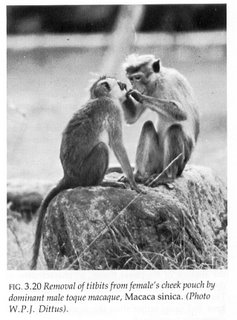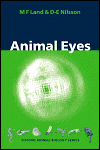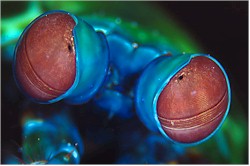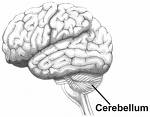It sounded interesting - so I clicked. See, I like to find out whether websites actually present scientifically valid information or the usual b.s. Unfortunately, the catch it and keep him dot com people wanted my email address first. SPAM! No thanks.
The advert appeared at the top of this article that my sister sent me. It reports the results of a new study that found people (undergraduates) judge a man's "dad" vs. "cad" potential based on the way he looks. Guys who have more masculine facial features (prominent jaw and brow ridge) tend to be seen as the type of guy who gets in fights, cheats on his mate, has a wandering eye, etc. etc. Less masculine looking men are seen as more emotionally sensitive, better dads and more caring parents.
Physiognomy (reading personality from faces) typically ranks right up there with astrology and phrenology (reading personality, especially criminal intent, from bumps on the skull) as pseudoscience. However, there is actually some truth to the link between personality and appearance. For the real deal on why the two are linked I highly recommend Reading Faces by Brandeis University psychologist Leslie Zebrowitz. It's an excellent overview of the subject. Suffice it to say, there are compelling scientific reasons to read into a person's face - but only to a point. If you judge a book by it's cover - reject it without opening it, you'll probably miss a lot of very fine stories. So goes with people.
So, in my humble scientific opinion what are ten secrets to getting your guy hooked on you for good?
In no particular order:
1. Choose a man you encounter often, or arrange to cleverly and unobtrusively bump into him frequently. You can take advantage of the mere exposure effect: We like even more those things or people that we encounter more often. A student once asked me in class if that means stalking works. It was one of the better questions and class discussions I've had.
2. Select a guy who is approximately the same level of physical attractiveness as you are.
3. Pick some who is as similar to you as possible. I put this one in bold because it is the most important one. Similarity is the number one reason for long term couple compatibility. Non-negotiable similarities are religion and intelligence. These should match for the best chance of achieving longevity. If you also agree on food, music, activities, movies, childcare, which kind of car to get, whether the toilet seat should be left up or down, which way the toilet paper hangs, etc you will be a lot better off.
4. Really get to know the person before committing. That way you can assess whether you are similar enough to be a good long term match. Don't fool yourself either - if you are passionately sexually attracted to the person you might be willing to overlook the fact that the person eats only vegan food and isn't really a dog person. I think it's best not to commit until after the passion phase subsides so you can realistically see who the person really is. This will take at least a year, if not two.
5. Rule out anyone who is highly neurotic. Neuroticism is one of the five fundamental personality traits (along with openness to new experiences, extraversion, agreeableness, and conscientiousness) in the Five Factor Model of Personality. A neurotic person is one who tends to be emotionally unstable; they get rattled easily and do not make good life partners.
6. Know how to flirt. There are steps to flirting; if followed in the right order at the right pace (you've got to have a feel for this to avoid coming on too strong) you'll be able to get the person interested so you can judge similarity.
-- Step 1: Make brief eye contact - glance in his direction then look down when his eyes meet yours.
-- Step 2: Give an eyebrow flash. Nothing says come hither to primates like briefly raising your eyebrows in unison. If you are interested in someone this will happen unconsciously. Watch for it - if you receive an eyebrow flash, that's a very good thing!
-- Step 3: Make nonverbal displays of submission. The aim is to appear non-threatening. Expose your neck, give a "coy smile," toss your head, smile, sit with your legs/arms crossed gently with toes pointing in.
-- Step 4: Make extended eye contact. Anthropologist Helen Fisher calls this a "copulatory gaze." Sustained gaze activates the sympathetic nervous system and causes arousal. A little arousal is what you want while flirting. Don't stare - that's creepy.
-- Step 5: Engage in "grooming talk" in which you chit chat about who you are. The aim is to discover similarities (or lack of them).
-- Step 6/7: Break the contact barrier. Here's where "grooming talk" can turn into actual grooming. Picking off lint on his sleeve or something like that can be an excuse for touching the person. Be careful - it might be viewed as being critical of his appearance. Touch should happen spontaneously.
-- Step 7/6. Achieve synchronicity of nonverbal behavior. Watch for mirrored posture, arm movement, taking a drink at the same time. Mirrored behavior is an excellent sign of rapport. You can feign this to a degree, but it's not advised. If you have to fake it, you don't have the kind of chemistry you need to sustain a long term cooperative relationship. Many animals who form pair bonds mirror each other during courtship; it's a great way to test whether they work well as a pair.
7. Avoid a man whose parents are divorced. Statistically speaking people whose parents have been divorced are more likely to get divorced too. It may have to do with seeing divorce as an acceptable way to solve marital problems.
8. Avoid a cheater. This is a man who had parents who cheated on their spouse or who has already cheated on a mate in the past. While it's possible for people to "learn from mistakes," statistically speaking the odds are better for long term relationships if there is no history of cheating. Infidelity, along with infertility, is a leading cause of divorce.
 9. Avoid someone who shows contempt while having an argument. Contempt has a very particular appearance - the easiest way to spot it is to look for muscle contraction on only one side of the mouth. This photo shows a fairly subtle contempt face. Psychologist John Gottman found that looks of contempt during arguments predict relationship dissolution.
9. Avoid someone who shows contempt while having an argument. Contempt has a very particular appearance - the easiest way to spot it is to look for muscle contraction on only one side of the mouth. This photo shows a fairly subtle contempt face. Psychologist John Gottman found that looks of contempt during arguments predict relationship dissolution.10. Communicate.
This is easier said than done, of course. It's important to let the other person know what's going on with you. If your potential 'Mr. Right' clams up emotionally when you need to talk, that's a bad sign. Similarly, you've got to be emotionally intimate with your potential Mr Right.
You are going to have arguments and disagreements. You can avoid a great deal of disagreement by choosing someone who is as similar to you as possible, but you will still have arguments over disagreements from time to time. How two people fight says a lot about how they function.
An argument should be about trying to understand the other person and reach an agreement, not an excuse to let off steam and say nasty things in anger. If his way of arguing is to insult you or tell you what you did wrong when you're trying to express what he did that upset you, that's not the right way to discuss the matter.
One of the most common mistakes to make while airing grievances is for the other person to air his too. Resist the temptation to talk about what has been bothering you when your mate talks about what has been bothering him. Instead, listen and show you comprehend what is upsetting him, then do what you can to help. If that thing that you thought about bringing up during the argument really is important, you will remember it later.































